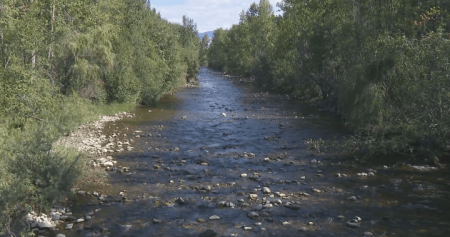The federal government has announced that all 48 First Nations in Alberta will now have a funded emergency manager co-ordinator position to help plan for and respond to wildfires. This initiative is part of the 2024 wildfire outlook and aims to provide support and resources to Indigenous communities that are at high risk of wildfires. Indigenous Services Minister Patty Hajdu highlighted the importance of having dedicated co-ordinators in communities to aid in preparedness and response efforts. Nearly 80 per cent of First Nation communities are at risk due to wildfires, making this new funding crucial for their safety and well-being.
Chief Conroy Sewepagahan of Little Red River Cree First Nation in northern Alberta expressed appreciation for the assistance but also raised concerns about the implementation and sustainability of the funding. He emphasized the challenges faced by his community, including multiple evacuations due to wildfires and limited access to infrastructure and services. Sewepagahan stressed the need for improved infrastructure support, especially in the isolated region where his community is located. Despite the efforts of staff and community members during emergencies, the lack of resources and access issues remain significant obstacles for effective emergency response.
The isolated location of Fox Lake, where Little Red River Cree First Nation is situated, presents further challenges for emergency response and evacuation efforts. The community relies on an ice bridge in the winter and barges in the summer to transport goods and services, making it difficult to access critical supplies during emergencies. Chief Sewepagahan highlighted the impact of past wildfires, which resulted in the loss of 475 infrastructure units, including 100 homes. The community’s large occupancy per home further emphasizes the need for improved infrastructure and resources to support evacuation and response efforts.
In response to the increasing wildfire risks, the federal government is providing advance payments to Indigenous communities across Canada to help them prepare infrastructure and evacuation plans ahead of time. With an average of 52 wildfire emergencies faced by First Nations annually, the government is working to enhance emergency management capabilities and incorporate Indigenous knowledge in firefighting strategies. An Indigenous Emergency Management Working Group has been established to address the specific needs of Indigenous communities and co-ordinate support for wildfire emergencies. By working collaboratively with communities and incorporating traditional knowledge, the government aims to build capacity in a self-determined manner.
The forecast for the 2024 wildfire season in Canada indicates a high risk of wildfires due to warmer-than-normal winter conditions, minimal snow, and widespread drought. Early modelling of weather trends predicts an above-normal fire risk from Quebec to British Columbia in April and May, with a high probability of above-normal temperatures in the coming months. Currently, there are about 70 fires burning, mainly in B.C., Alberta, and the Northwest Territories, some of which have re-emerged from 2023. The federal government is working to address the growing wildfire risks by providing support to Indigenous communities, enhancing emergency management capabilities, and incorporating traditional knowledge into firefighting strategies.
As communities prepare for another potentially catastrophic fire season, the federal government is committed to supporting Indigenous communities in their efforts to plan for and respond to wildfires. By providing funding for emergency manager co-ordinator positions, offering advance payments for infrastructure and evacuation planning, and establishing an Indigenous Emergency Management Working Group, the government aims to improve the resilience of Indigenous communities in the face of growing wildfire risks. Despite the challenges faced by isolated communities like Little Red River Cree First Nation, collaborative efforts and enhanced resources can help to mitigate the impact of wildfires and protect the safety and well-being of residents.













